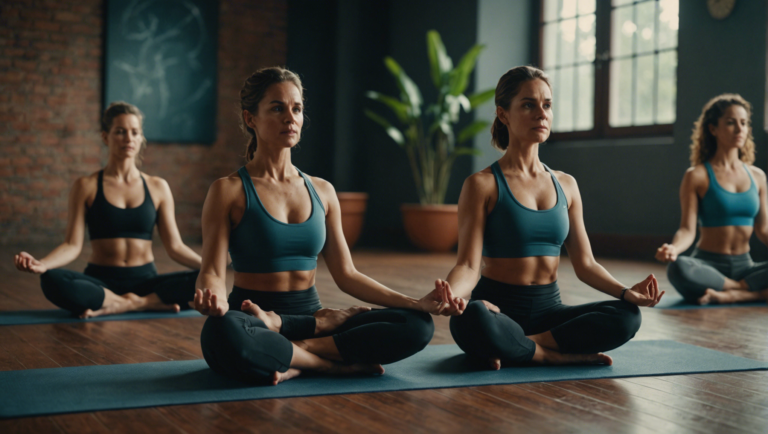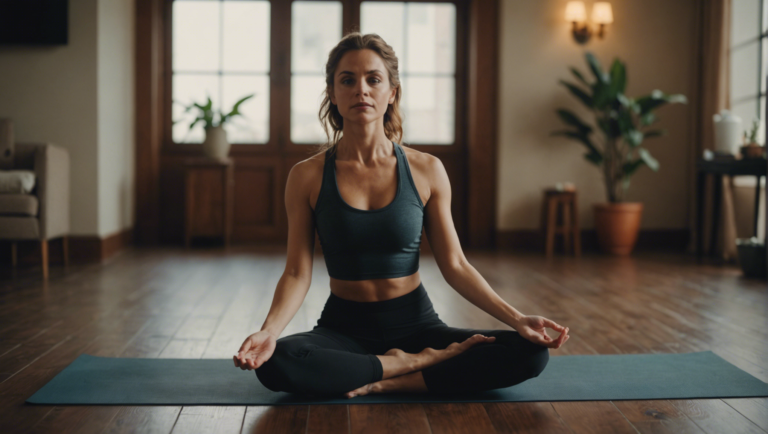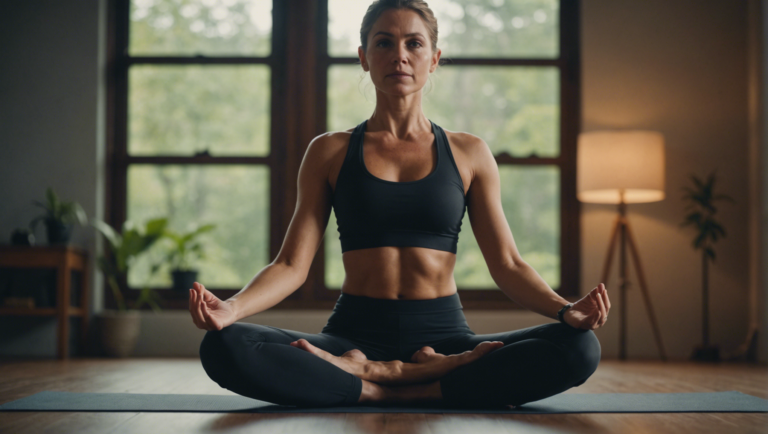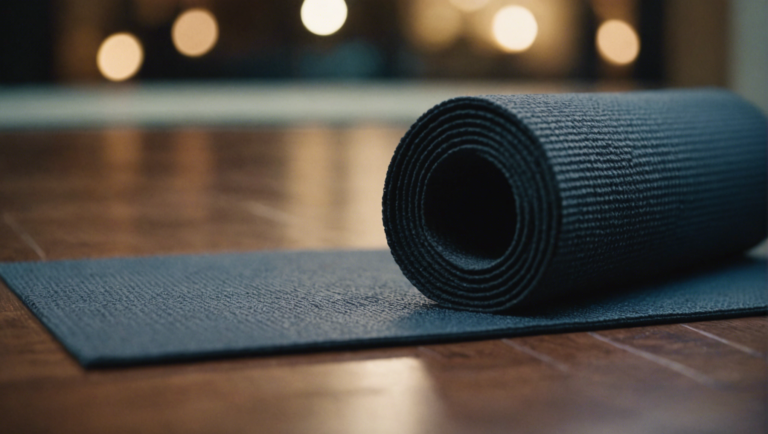Guidelines On The Duration It Takes To Achieve Flexibility With Yoga
Importance of Consistency in Yoga Practice for Achieving Flexibility Goals
Yoga is a practice that not only enhances physical strength and mental well-being but also plays a significant role in improving flexibility. Achieving flexibility goals through yoga requires consistency and dedication to regular practice. Consistency in yoga practice is vital as it allows the body to gradually adapt to the various poses and stretches, thereby leading to increased flexibility over time.
The Role of Consistency in Yoga Practice
Consistency in yoga practice is crucial for achieving flexibility goals as it helps in training the body to become more flexible and adaptable. By practicing yoga regularly, the muscles, tendons, and ligaments are stretched and strengthened consistently, leading to increased flexibility. This consistent stretching helps in reducing muscle stiffness and tension, making the body more supple and agile.
Benefits of Regular Yoga Practice for Flexibility
Regular yoga practice not only improves flexibility but also enhances overall physical fitness. The various yoga poses and stretches target different muscle groups, helping to increase the range of motion in the joints and muscles. As flexibility improves, the risk of injuries decreases, and the body becomes more resilient to physical stress.
Progression in Flexibility Over Time
The duration it takes to achieve flexibility with yoga varies from person to person and depends on various factors such as age, body type, current level of flexibility, and the frequency of yoga practice. Generally, consistent practitioners may start noticing improvements in flexibility within a few weeks to a few months of regular practice.
Factors Influencing Flexibility Progress
Several factors can influence the speed at which flexibility goals are achieved through yoga practice. These include:
-
Frequency of Practice: Practicing yoga more frequently, such as several times a week, can accelerate progress towards achieving flexibility goals.
-
Intensifying the Practice: Increasing the intensity of yoga practice by trying more challenging poses or holding stretches for longer durations can help in speeding up flexibility gains.
-
Proper Alignment: Focusing on proper alignment in yoga poses is essential for effectively targeting the muscles and increasing flexibility safely.
Tips for Enhancing Flexibility Through Yoga
To maximize flexibility gains through yoga practice, consider the following tips:
-
Warm-up Before Practice: Always start with a gentle warm-up to prepare the muscles for stretching and prevent injuries.
-
Consistent Practice Schedule: Establish a regular practice schedule and stick to it to ensure consistent progress in flexibility.
-
Listen to Your Body: Pay attention to your body’s limitations and avoid pushing yourself beyond what is comfortable to prevent injuries.
Consistency in yoga practice is key to achieving flexibility goals. By committing to regular practice, focusing on proper alignment, and gradually intensifying the practice, individuals can enhance their flexibility over time. Remember that progress may vary for each individual, so patience and dedication are essential on the journey to increased flexibility through yoga.
Different Yoga Poses and Techniques to Enhance Flexibility
Yoga is an ancient practice that combines physical postures, breathing techniques, and meditation to promote overall well-being. One of the key benefits of practicing yoga is enhanced flexibility. Flexibility is essential for maintaining mobility, preventing injuries, and improving performance in various physical activities. In this article, we will explore different yoga poses and techniques that can help enhance flexibility.
Importance of Flexibility in Yoga Practice
Flexibility plays a crucial role in yoga practice as it allows for a greater range of motion in the joints and muscles. Increased flexibility can help practitioners achieve proper alignment in poses, deepen stretches, and reduce the risk of straining muscles. It also promotes relaxation, reduces muscle tension, and enhances overall physical comfort during the practice.
Yoga Poses for Improving Flexibility
-
Forward Fold (Uttanasana): This pose stretches the entire back of the body, including the hamstrings, calves, and spine. Forward folds help release tension in the back muscles and increase flexibility in the spine.
-
Downward-Facing Dog (Adho Mukha Svanasana): This pose targets the hamstrings, shoulders, and calves, while also strengthening the arms and legs. Downward-Facing Dog is a great pose for lengthening the spine and improving overall flexibility.
-
Cobra Pose (Bhujangasana): Cobra pose opens up the chest, stretches the shoulders, and strengthens the spine. It is beneficial for improving flexibility in the spine and reducing stiffness in the back muscles.
-
Pigeon Pose (Eka Pada Rajakapotasana): This hip-opening pose is excellent for increasing flexibility in the hips, groin, and thighs. Pigeon pose also helps release tension in the lower back and improve overall hip mobility.
Techniques to Enhance Flexibility in Yoga
-
Dynamic Stretching: dynamic stretching exercises into your yoga practice can help improve flexibility by gently moving the muscles and joints through a full range of motion. Dynamic stretching can be done as part of a warm-up routine before practicing yoga poses.
-
Prop Assistance: Using yoga props such as blocks, straps, or bolsters can provide support and assistance in achieving proper alignment and deeper stretches. Props can help beginners ease into poses and gradually increase flexibility over time.
-
Breath Awareness: Focusing on the breath during yoga practice can help relax the muscles, calm the mind, and improve flexibility. Deep, mindful breathing encourages relaxation and allows practitioners to move more deeply into poses without force or strain.
Incorporating yoga poses that target flexibility, along with specific techniques to enhance range of motion, can help practitioners achieve greater flexibility over time. Consistent practice, patience, and listening to your body are key elements in improving flexibility through yoga. Remember that everyone’s body is different, so honor your individual journey towards increased flexibility in your yoga practice.
How Breathing Exercises in Yoga Aid in Improving Flexibility
Yoga is a holistic practice that encompasses various elements such as physical postures, meditation, and breathing exercises. Among these components, breathing exercises play a crucial role in enhancing flexibility. By incorporating specific breathing techniques into your yoga practice, you can significantly improve your overall flexibility and achieve a greater range of motion.
Importance of Proper Breathing Techniques in Yoga
In yoga, breathing is not just a physical act but a fundamental aspect of the practice. Proper breathing techniques, also known as pranayama, help to control the flow of vital energy in the body, known as prana. By mastering the art of breathing, practitioners can harness this life force to improve their physical and mental well-being.
How Breathing Exercises Aid in Improving Flexibility
One of the primary ways in which breathing exercises aid in improving flexibility is by facilitating relaxation. When you focus on deep, conscious breathing during yoga poses, you signal to your body to release tension and let go of any resistance. This allows your muscles to relax and become more pliable, making it easier to ease into stretches and increase flexibility over time.
Enhancing Mind-Body Connection
Another benefit of incorporating breathing exercises into your yoga practice is the enhanced mind-body connection. By syncing your breath with your movements, you cultivate a sense of awareness and mindfulness that helps you tune into your body’s needs. This heightened awareness allows you to move more intuitively and understand your limits, ultimately leading to safer and more effective stretching practices.
Promoting Circulation and Oxygen Flow
Deep breathing exercises in yoga also play a crucial role in promoting circulation and oxygen flow throughout the body. As you breathe deeply and fully, you increase the oxygen supply to your muscles, tissues, and organs. Improved circulation not only nourishes the body’s cells but also helps in the elimination of toxins, aiding in muscle recovery and overall flexibility.
Building Endurance and Strength
Consistent practice of breathing exercises in yoga can also help build endurance and strength, which are essential components of flexibility. By oxygenating the muscles effectively, you enhance their capacity to endure longer holds and challenging poses. Additionally, deep breathing fuels the muscles with energy, enabling you to engage them more efficiently and build strength over time.
Breathing exercises are a vital aspect of improving flexibility in yoga practice. By incorporating proper breathing techniques into your routine, you can enhance relaxation, promote mind-body connection, boost circulation, and build endurance. Embrace the power of breath in your yoga practice to unlock your body’s full potential and achieve greater flexibility with each session.
Understanding the Role of Patience in Achieving Long-Term Flexibility with Yoga
Yoga is a practice that offers a multitude of benefits, including increased flexibility. However, achieving significant and long-term flexibility through yoga requires patience and dedication. Understanding the role of patience in this process is crucial for individuals looking to enhance their flexibility effectively. Let’s delve deeper into how patience plays a vital role in achieving long-term flexibility with yoga.
Importance of Consistency in Practice
Consistency is key when aiming to improve flexibility through yoga. Regular practice allows your body to adapt to the various poses and movements, gradually increasing your range of motion. By consistently engaging in yoga sessions, your muscles, tendons, and ligaments become more accustomed to the stretches, leading to improved flexibility over time. Patience is essential in maintaining a consistent yoga practice, as progress may not always be immediately noticeable.
Understanding Your Body’s Limitations
Every individual has a unique body with different strengths and limitations. It’s important to listen to your body and understand its needs when practicing yoga. Pushing yourself too hard to achieve quick results can lead to injuries and setbacks in your flexibility journey. Patience in yoga involves acknowledging your current limitations and allowing your body to progress at its own pace. By practicing mindfulness and respecting your body’s boundaries, you can gradually increase your flexibility in a safe and sustainable manner.
Embracing the Journey, Not Just the Destination
Flexibility is a journey that extends beyond physical benefits. It also encompasses mental and emotional growth. Patience in yoga involves embracing the process of becoming more flexible, rather than solely focusing on the end goal. Enjoying each moment of your practice, regardless of the progress made, can cultivate a sense of gratitude and mindfulness. By shifting your focus to the present moment, you can appreciate the incremental improvements in flexibility and overall well-being that yoga offers.
Overcoming Frustrations and Plateaus
In any fitness journey, including yoga, plateaus and moments of frustration are common. Progress may seem stagnant at times, leading to feelings of impatience and doubt. However, understanding that fluctuations in flexibility are natural can help you navigate through these challenges with grace. Patience in yoga involves persisting through plateaus, trusting the process, and maintaining a positive attitude towards your practice. By staying committed and resilient during times of slow progress, you can break through barriers and continue advancing in your flexibility goals.
Achieving long-term flexibility through yoga requires a combination of dedication, consistency, and patience. By committing to a regular practice, understanding your body’s limitations, embracing the journey, and overcoming challenges, you can enhance your flexibility effectively. Remember that flexibility is not just a physical attribute but also a mindset that evolves through patience and perseverance. Embrace the process, trust in your abilities, and enjoy the transformative benefits that yoga brings to your body, mind, and spirit.
Incorporating Strength Training into Your Yoga Routine to Fast-track Flexibility Gains
Understanding the Role of Strength Training in Enhancing Flexibility with Yoga
Yoga is renowned for its ability to improve flexibility, strength, and overall well-being. However, achieving significant gains in flexibility often requires time and dedication. By incorporating strength training into your yoga routine, you can potentially fast-track your flexibility gains while reaping additional benefits for your body.
Complementary Benefits of Strength Training for Flexibility
Strength training works synergistically with yoga to enhance flexibility by targeting different muscle groups. While yoga primarily focuses on lengthening muscles and improving range of motion, strength training helps build muscle mass and improve muscle endurance. By developing stronger muscles through resistance exercises, you create a more stable foundation to support your yoga practice.
Targeted Muscle Engagement through Strength Training
Certain muscle groups play a crucial role in maintaining flexibility, such as the hamstrings, hip flexors, and shoulders. strength training exercises that target these specific areas can help address muscle imbalances and restrictions that limit flexibility. For example, performing squats, lunges, and planks can strengthen the leg muscles, while shoulder presses and rows can enhance shoulder mobility.
Balancing Strength and Flexibility in Your Yoga Practice
Finding the right balance between strength and flexibility is key to optimizing your yoga practice. While flexibility allows for deeper stretches and poses, strength provides stability and support to prevent injuries. Integrating strength training exercises like bodyweight movements, weightlifting, or resistance band workouts can help you strike a harmonious balance between strength and flexibility.
Progressive Overload for Long-Term Flexibility Gains
Progressive overload techniques in both strength training and yoga can lead to sustained flexibility gains over time. Progressive overload involves gradually increasing the intensity or resistance of exercises to continually challenge your muscles and promote growth. This progressive approach can be applied to both strength training and yoga sessions to stimulate muscle adaptation and enhance overall flexibility.
Creating a Well-Rounded Routine for Optimal Results
To maximize the benefits of combining strength training with yoga for flexibility gains, it’s essential to design a well-rounded routine that includes a variety of exercises. Include exercises that target different muscle groups, incorporate dynamic stretches, and focus on improving mobility in key areas. By diversifying your routine, you ensure comprehensive muscle development and flexibility enhancement.
Integrating strength training into your yoga routine can expedite your flexibility gains while fostering overall strength and stability. By strategically combining both modalities, you can address muscle imbalances, enhance muscle engagement, and achieve a more balanced and flexible body. Remember to listen to your body, progress gradually, and enjoy the transformative benefits of a holistic approach to fitness and flexibility.
Conclusion
Strength training into your yoga routine can be a game-changer when it comes to fast-tracking flexibility gains. By combining these two disciplines, you can not only increase your strength but also improve your flexibility more effectively. Strength training helps build muscle which supports and stabilizes your joints, allowing you to move deeper into yoga poses without compromising safety. Additionally, strength training can aid in correcting muscle imbalances and enhancing overall body awareness, both of which are crucial for achieving optimal flexibility.
Achieving flexibility through yoga is a journey that requires dedication, consistency, and patience. By following the guidelines on the duration it takes to achieve flexibility with yoga and incorporating the various tips and techniques discussed in this article, you can work towards improving your flexibility levels gradually. Remember that flexibility is not just about physical benefits; it also encompasses mental and emotional well-being. Embrace the process, trust in your practice, and celebrate your progress along the way. With time, persistence, and the right mindset, you can reach your flexibility goals and experience the transformative power of yoga in your life.




